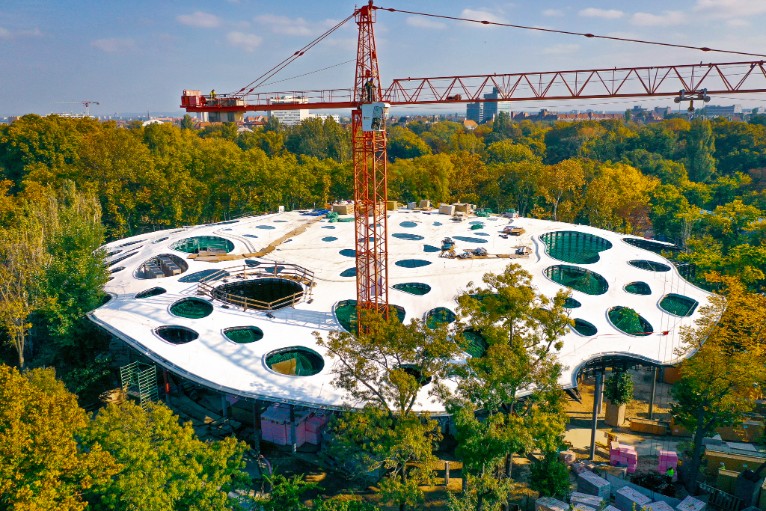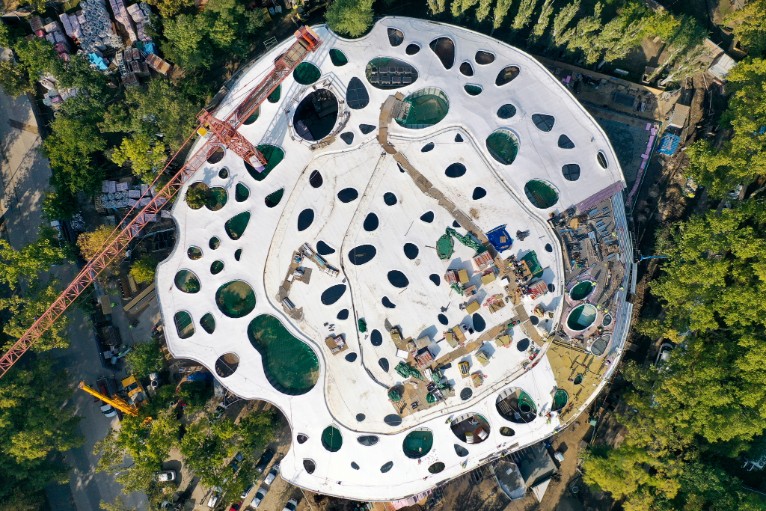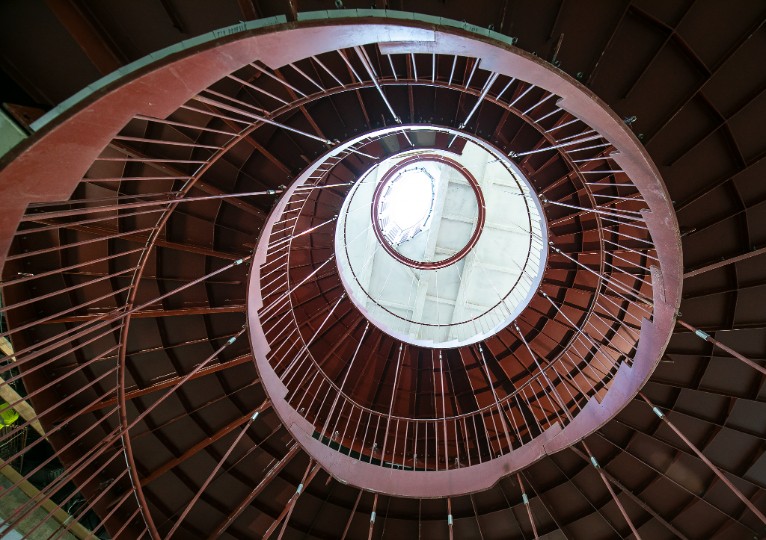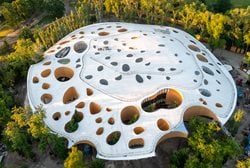
The House of Hungarian Music, designed by Japanese starchitect Sou Fujimoto, is being built in the Hungarian capital as part of the Liget Budapest Project, Europe’s largest urban cultural development programme.
The building cannot but draw the eye with its organically undulating roof structure distinguished by its extensive glass walls and its canopy perforated with holes.
At the same time, thanks to its gracefulness and transparent surfaces, it harmoniously blends in with the park that embraces it. The new institution will operate as the world’s first facility of complex musical initiation bringing countless musical experiences to visitors through its wide range of events: interactive exhibitions on musical history, concerts and exciting music education workshops.
In 2019 the building was selected as Europe’s best public building at the International Property Awards, while at the 2020 Music Cities Award it won the title of the World’s Best Use of Music in Property Development.
The building has been completed structurally and it is anticipated to open its doors to the public at the end of 2021. CNN and the World Architecture Community have chosen the House of Hungarian Music as one of the most anticipated buildings in 2021, alongside works by starchitects such as Zaha Hadid, Rem Koolhaas and Renzo Piano.
The Liget Budapest Project is currently Europe’s most significant cultural development, which combines Hungary’s largest-scale park and landscape architecture project with the development of institutions not seen on a scale since the days of the millennium.

The designer, Sou Fujimoto, has created a unique, inspiring and organic building. His design was selected by Hungarian and international jurors from among 168 projects submitted to an international competition.
When entering the international competition for the House of Hungarian Music, Fujimoto envisioned a project in which the boundary between the natural and the built environments is dissolved, and harmony is struck between the nature of sound and the sounds of nature. The signature feature of the design, the floating roof, was inspired by the visual representation of the vibration of sound: the wave. In the spirit of openness and transparency, Fujimoto designed the side walls of the building to be made of glass and the perforated structure of the roof articulated by lightwells to let light into the interior of the building much like the foliage of trees. He also drew inspiration from the famed Secessionist building of the Liszt Academy in Budapest and, not least, by the internationally renowned tradition of Hungarian music and music education.
“It is incredibly inspiring to work in one of the world’s first public parks, and the task of designing the building was especially exciting since we not only created an edifice but also brought the park experience into the building. The Liget Budapest Project, and within it the House of Hungarian Music, are a truly emblematic development project, which might serve as an example for future urban developers since it managed to create exceptional harmony between the green and the built-up environments.” - noted Sou Fujimoto about his vision.
Unique architectural solutions
One of the features facilitating the implementation of Fujimoto’s vision is the building’s glass wall, which lends it gracefulness, transparency and individuality. The unique appearance of the House of Hungarian Music is coupled with special engineering solutions: the glass wall of the facade consists of 94 custom-manufactured heat-insulated panels, which are close to 12 metres high in some parts of the building.
Another iconic feature of the design is its organic roof structure: Fujimoto’s special floating roof was inspired by the form of soundwaves. The playfully undulating canopy of varying thickness stays below the level of the foliage, ensuring that the building harmoniously blends in with the environment.

“Underpinning the spectacular and unmistakable sight of the House of Hungarian Music is a host of design and engineering solutions unprecedented in Hungary. There are no right angles in the roof structure, almost no two elements that are the same. It is all unique and the surface is punctured by close to 100 individually designed holes for the trees of the park to emerge through; moreover, one of the innovative solutions was also installed in these openings: the lightwells begin here, which channel the light right down to the lowest levels, thus helping to illuminate the interiors and create a unique ambiance.” - said Sou Fujimoto.



 21
21
comment